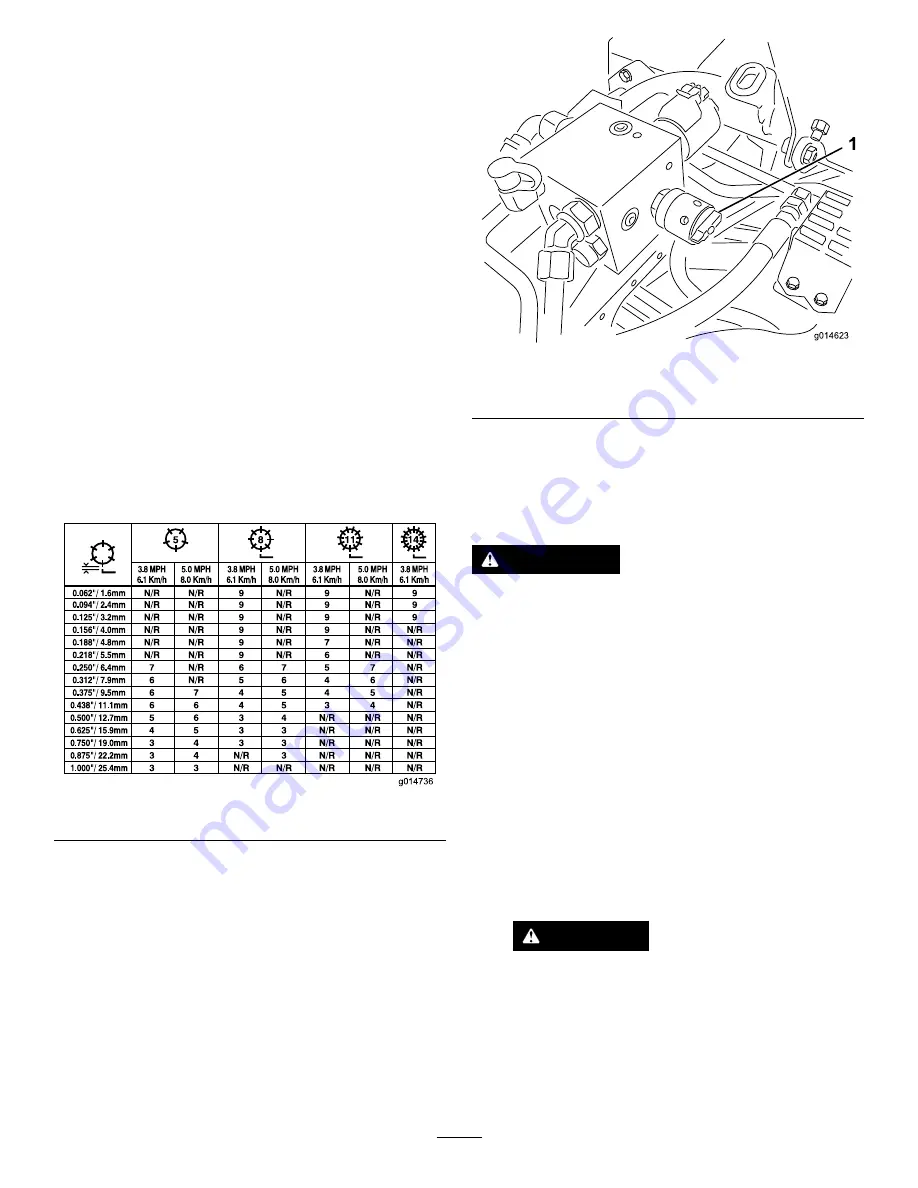
Checking the
Reel-to-Bedknife Contact
Each day before operating the machine, check the
reel-to-bedknife contact, regardless if the quality of cut
had previously been acceptable. There must be light
contact across the full length of the reel and bedknife;
refer to the Cutting Unit
Operator’s Manual
.
Setting the Reel Speed
To achieve a consistent, high-quality cut and a
uniform, after-cut appearance, you must correctly set
the reel speed control (located on the manifold block
under the cover to the left of the seat). Adjust the reel
speed control as follows:
1.
Select the height-of-cut at which the cutting units
are set.
2.
Choose the desired ground speed best suited
for conditions.
3.
Use the table that follows to determine the
reel-speed setting for your 5-, 8-, 11-, or
14-blade cutting units. (
)
g014736
Figure 50
4.
Adjust the reel speed by rotating the knob
(
) until the indicator arrows are in line
with the number you determined in step
g014623
Figure 51
1.
Reel-speed control
Note:
You can increase or decrease the reel
speed to compensate for turf conditions.
Backlapping the Reels
WARNING
Contact with the reels or other moving parts
can result in personal injury.
•
Keep your fingers, hands, and clothing
away from the reels or other moving parts.
•
Never attempt to turn the reels by hand or
foot while the engine is running.
1.
Position the machine on a level surface, lower
the cutting units, shut off the engine, and engage
the parking brake.
2.
Remove the plastic cover to the left side of the
seat.
3.
Make initial reel to bedknife adjustments
appropriate for backlapping on all cutting units
which are to be backlapped; refer to the Cutting
Unit
Operator’s Manual
.
DANGER
Changing the engine speed while
backlapping may cause the reels to stall.
•
Never change the engine speed while
backlapping.
•
Backlap only at idle engine speed.
4.
Start the engine and run at low idle speed.
44









































